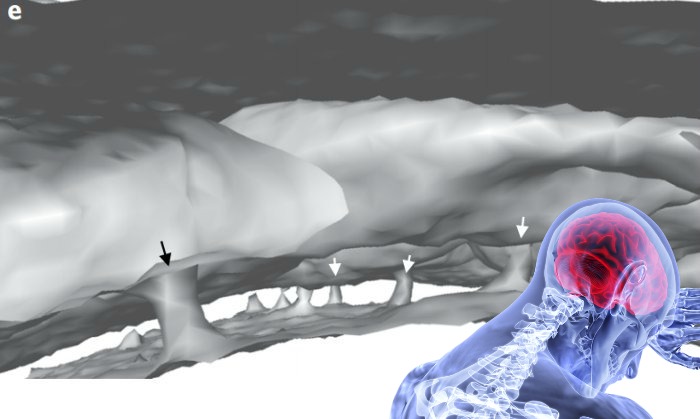Scientists Discover Bizarre Tunnels Between the Skull and The Brain of Humans And Mice
By Edge Canopy
Apparently human beings feature tiny tunnels in their heads, according to a report recently put forth by a team of medical researchers. Recently, they claim to have identified “tunnels” in the brains of both mice and human beings. They are described as small channels that connect the bone marrow in a skull to the lining of the brain.
The research suggests these “brain tunnels” may function to provide an efficient, direct route for immune cells like neutrophils to rush into the brain in the event of damage, from the marrow.
The thing is, scientists may not be completely certain about how immune cells are transferred throughout the body, and the different ways this occurs. It was believed that immune cells were transported throughout the body, via the bloodstream to other areas to manage brain inflammation after something like a stroke, brain disorder, or brain injury like encephalitis.
Widget not in any sidebars
What this discovery suggests, is that the immune cells have had a “shortcut” this entire time.

Published in the journal Nature Neuroscience, the researchers’ main focus was stated to be determining whether or not immune cells transported to the brain after an injury originated from the skull, or the large shin bones known as tibia.
Neutrophils were the main immune cells the study followed. The narrative is that neutrophils are the “first responders” when it comes to an immune response, the first cells to react in such a way.
According to Science Alert:
“The team developed a technique to tag cells with fluorescent membrane dyes that act as cell trackers. They treated these cells with the dyes, and injected them into bone marrow sites in mice. Red-tagged cells were injected into the skull, and green-tagged cells into the tibia.
Once the cells had settled in, the researchers induced several models of acute inflammation, including stroke and chemically induced meningoencephalitis.”

They found that the skull in fact did contribute a significant number more neutrophils to the brain in the event of injury than the tibia. So it begged the question: how were these neutrophils delivered to the brain?
Matthias Nahrendorf of Harvard Medical School and Massachusetts General Hospital in Boston said:
“We started examining the skull very carefully, looking at it from all angles, trying to figure out how neutrophils are getting to the brain.”
“Unexpectedly, we discovered tiny channels that connected the marrow directly with the outer lining of the brain.”
They imaged the inner surface of a mouse’s skull with a technique known as organ-bath microscopy, which utilizes a bath to maintain integrity of the tissue while it’s under observation.
Hopefully these mice did not have to suffer in any way for the production of this research.
It was found inside the skull of mice that microscopic, tiny vascular channels directly connect the dura to the skull marrow. The dura encases the brain, it’s a protective membrane.
This illustrates the incredible complexity and functionality of the mammal brain, of life itself.
Usually red blood cells flow through these channels to the bone marrow from the interior of the skull, going a certain direction. But if someone has a stroke or a brain injury like that, apparently these channels are mobilized for the transportation of neutrophils, completely in the opposite direction to the brain from the marrow.
The article from Science Alert continued:
“This was in mice, though. To find out if humans have something similar, they obtained pieces of human skull from surgery and conducted detailed imaging.
They noticed channels there as well; five times larger in diameter than the channels in the mouse skulls, in both the inner and outer layers of bone.”
If anything positive can be derived from this, maybe it’s that life is complex and beautiful. Science has nowhere near quantified and understood every element of the the great complexity that is the Earth. Maybe that makes this existence a little bit more special.
This article appeared first at Edge Canopy


